Farewell to a member of the Greatest Generation (Erika Beck, assistant producer, Tom Brokaw Reports)
It was my first year out of college, working in Tom Brokaw's office at Nightly News, when I was lucky enough to meet Tom Broderick, a World War II veteran blinded by a German sniper in 1944.
Mr. Broderick came to New York from Chicago to be honored at the Disabled Veterans' LIFE Awards Gala. He was also a guest on the Today Show and Nightly News, meeting with a younger veteran of the war in Iraq who was also blind as a result of injuries while serving in Iraq.
I can still remember my anxiety during his visit to New York, as I wanted everything to be perfect. In the days before his arrival, I spent a great deal of time planning the visit, working with producers and travel agents, leaving no detail up to chance. In fact, I still have a folder full of papers and information that I needed during Mr. Broderick's stay, stored safely in my file cabinet... Mr. Broderick passed away this weekend, and I lost a good friend.
•
• February 6, 2006 |
The truth behind the New York Times headline (Ann Curry, Dateline co-anchor)

A week ago, the New York Times angered some of us at NBC News when it announced the wounding of ABC anchorman Bob Woodruff and cameraman Doug Vogt with this headline:
ABC NEWS ANCHOR IS BADLY INJURED BY BOMB IN IRAQ_______________LATEST BLOW TO NETWORK ________________
Cameraman Also Injured — Field Reports Were a Ratings Strategy
**
The last line, "Field Reports Were a Ratings Strategy," sparked the anger. Sure it was fair to report the emerging anchor team at ABC News was field reporting on major stories. But to headline that Bob was in Iraq as a ratings strategy was insensitive and inaccurate.
The truth is, reporting on the war appears to be a big ratings loser. Consistently, the American people have chosen not to watch in-depth reporting on the war. News executives, already worrying about the safety of their employees, also have to wonder if Americans just don't want to hear the reality. Those are some of the reasons we see so little war reporting beyond the casualty counts and the basic developments of the day.
At the same time, many of us who go to dangerous places to report the news can almost hear Americans crying out for clarity about the war. We want to report in-depth on how the troops are holding up, how commanders on the ground assess the potential for victory and how the people of Iraq and Afghanistan are affected.
But with the perceived lack of public interest and the enormous risks involved in gathering the facts and images, it is getting harder and harder to report on these stories.
We are experiencing a softening of news coverage across all networks. We see it in newspapers too, with the number of soft features appearing more often on front pages as circulations decline.
There are still examples of courageous war reporting against these odds on all the networks and in newspapers. But are Americans getting the full story? No.
Will the wounding of Woodruff and Vogt have a further chilling effect on television war coverage? Yes is my bet — at least for the short term.
But if I and many reporters of like mind can have our way, the chilling effect will not last long — we can't afford to let it.
We live in historic times that demand us to rise against our fears. Each one of us must find the courage to do what we can to leave our children a safer world. News organizations must report the truth, even if America may not want to hear it.
And America must find the courage to stay informed.
•
Check back for Ann's commentary weekly on MSNBC.com.
• February 3, 2006 |
'To Catch a Predator' III
Blog with Chris: The Inside Dateline blog had live updates from Chris Hansen during Dateline's airing: Feb. 3, Friday, 9 p.m. ET.
• February 2, 2006 |
A coast-to-coast review (Lisa Green, Senior Producer, Broadcast Standards)

You might be curious about the men Dateline will feature on Friday’s "To Catch a Predator" report. Why them? How bad was their behavior? I’d like to explain one factor that helped us decide which men to include.
As these investigations have evolved, so has the behind the scenes work we put into preparing these stories for broadcast. This time around, the presence of the Riverside County, California sheriff’s department raised the stakes for the men who showed up to the house after chatting with Perverted-Justice volunteers. And we conducted real-time reviews as the chats took place, starting before any men arrived at the house, and before arrests were made. In part, we looked for how intent the men were on having a sexual encounter with someone they apparently thought was a 12 or 13-year-old child.
I’ve seen transcripts where the men chatting online expressed some hesitation about a face-to-face meeting, or professed that their intentions did not include sex.
•
• February 1, 2006 |
Why it's not entrapment (Stone Phillips, Dateline correspondent)
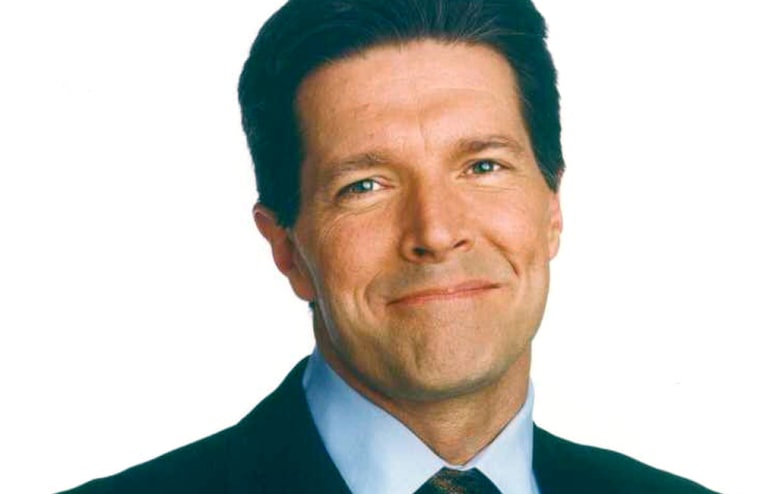
They'rrrrre back! More on-line prowlers showing up for what they believe is a date with an underaged teen. And once again, when confronted by Chris Hansen and our Dateline cameras, their excuses are almost as outrageous as their online behavior. This is the third installment of our "To Catch A Predator" investigation and each time the results just seem to get more disturbing.
Having said that, I wonder if you found yourself asking some of the same questions I did when we started this series: When these "home alone" meetings are arranged, who actually suggests that the men come over? Is it the men themselves? Or is it the Perverted-Justice decoy engaging them online? How careful is Perverted-Justice not to lure people into doing something that with less encouragement they might not do? Is there an element of entrapment here?
•
• January 31, 2006 |
Ron Knight provided security for Chris Hansen and the crew of “To Catch a Predator,” on all three hidden camera investigations.
Knight is a retired NYPD Lieutenant who spent 23 years with the force. He currently works with NBC security, and also has his own security company, “Roundtable Solutions.” Below is his blog entry on his experience with “Dateline” during the investigation.
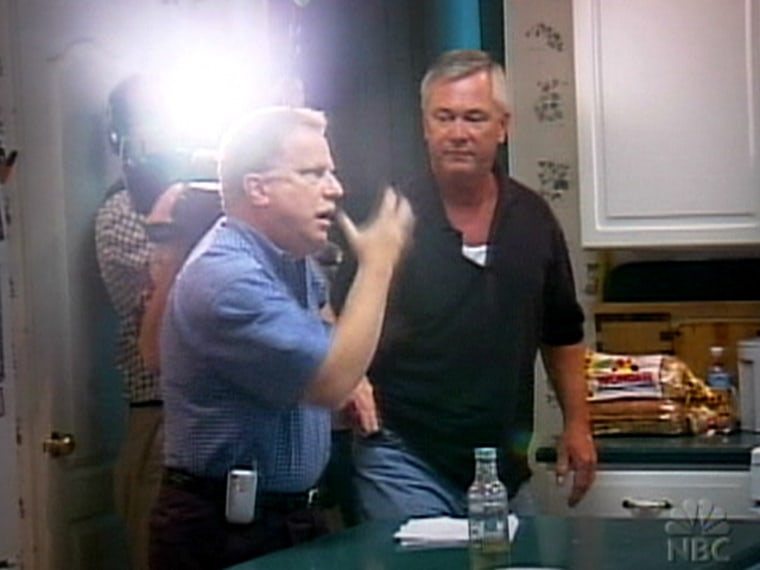
Providing security for “To Catch a Predator” (Ron Knight, president, Roundtable Solutions Inc.)
When Donna Johnson, Dateline associate producer, called and asked me if I could provide a security person to assist on “To Catch a Predator,” it sounded fascinating to me. I immediately said “yes.” In fact, I was more than happy to do it myself.
I believe what “Dateline” is doing in this type of story is a public service. My children are both adults, but I have a niece and nephew that are young teens. I worry about their exposure to these predators. As a former detective, I consider myself a student of human nature, and this was an opportunity to observe people in such a unique situation.
When those men entered the house they appeared to be in the process of committing a crime. With very few exceptions, they could have been your neighbor or co-worker or friend. The entire experience was very compelling.
Safety precautions
One of the first things I do when I get to the house is to go through the kitchen. This is where much of the action takes place – and the kitchen is always the location where interviews are conducted by Chris.
•
• January 30, 2006 |
Below is an excerpt of Chris Hansen's journal while taping 'To Catch a Predator' III in Southern California.
January 5, 2006: Arriving in Southern California (Chris Hansen, Dateline Correspondent)

Mitch Wagenberg and his team are still hooking up the more than a dozen hidden cameras we’ll need for the shoot. There are enough cables and wires running through the house to power a 737 jetliner.
A virtual TV control room is taking shape in the master bedroom.
•
Turning Frey into a million little pieces (Josh Mankiewicz, Dateline correspondent)
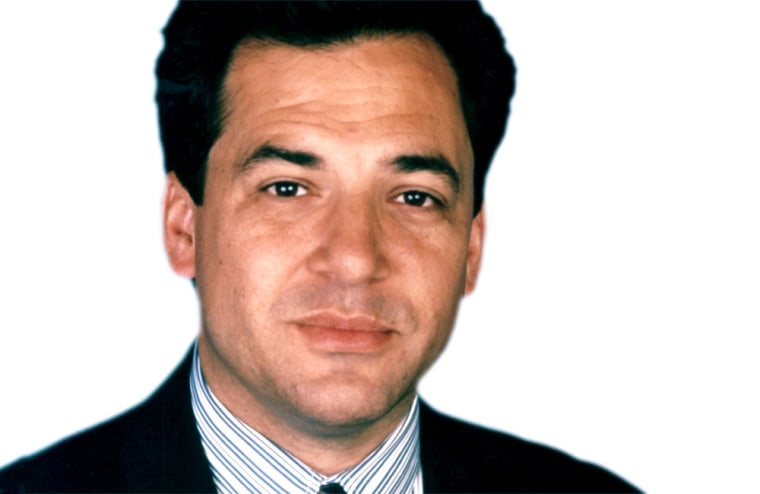
One blog topic outstripped all the others this week. It’s a story of redemption, of lying, of betrayal, of anger, and of vengeance— in that order.
I’m talking about the back and forth between Oprah Winfrey and author James Frey.
The trouble started on the ‘Net, when the Smoking Gun revealed that Frey’s book “A Million Little Pieces,” his simultaneously raw and hardboiled memoir of addiction and recovery... was actually a good part fiction.
It turns out that conning Oprah can make you wealthy. She put Frey’s life story in her book club and it sold more than three and a half million copies.
At first, Oprah defended Frey. Bloggers accused her of not caring about the truth. And that’s apparently what made the difference. Because suddenly, the issue wasn’t James Frey’s credibility—it was Oprah’s. It was time to throw down. Oprah called Frey on the carpet. She apologized to her viewers and slammed him for being a liar. (Btw, an estimated 9.5 million people watched.)
Just as many of you were picking up “A Million Little Pieces,” Oprah was turning the author into exactly that.
• |
Your kid's cyber secret (Rob Stafford, Dateline correspondent)
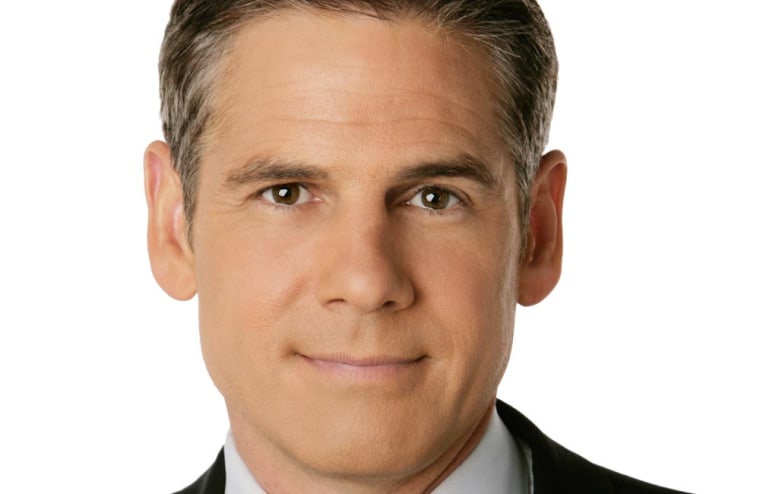
MySpace.com: Never heard of it? Just ask your kids. They know.
It's a cyber secret some of them like to keep from their tech-challenged parents. I think of myself as a savvy dad, but I was shocked by some of what I found on the site. Friday night on Dateline we'll show you what you need to know about MySpace and other social networking sites to keep your kids safe.
MySpace is sort of a cyber diary, yearbook and social club. It's free, easy to join, and easy to message other members. You're supposed to be at least 14 to sign up but we found younger kids using it. Kids design their own MySpace page and most chat back and forth about school, sports, gossip etc.
What many of them don't realize is that millions of people have access to the pictures and personal information they post. Police say in some cases sexual predators are using that information to find kids. One Internet safety expert said for a pedophile, it can be "one stop shopping by catalogue."
• January 26, 2006 |
Did a mother’s lack of care cause her daughter’s death? (Dan Slepian, Dateline producer)
It was a landmark case, the first of its kind in Nevada: a mother charged with murder in the death of her diabetic daughter.
I first met Cheryl Botzet two years ago, just a few weeks after her 11-year-old daughter, Ariel, died of complications from Type 1 diabetes. Ariel, a fifth-grader at Dearing Elementary School, died three days after she was taken to the hospital in a semi-comatose state. At the time, I was in Vegas shooting a different hour for Dateline when the story hit the papers.
“Medical examiners have determined the February death of an 11-year-old diabetic girl was a homicide because she did not receive appropriate care….”
Doctors at the hospital were suspicious of Ariel’s extremely high blood sugar readings— they were literally off the charts— and called police. Homicide detectives conducted an investigation and say they quickly saw a portrait of a neglectful mother who knew how to take care of her daughter's illness, but didn’t. It was a pattern of neglect so abhorrent, they say, it amounted to a crime. They argued it was Cheryl’s lack of care that directly— and needlessly— caused her daughter’s death. They charged her with murder.
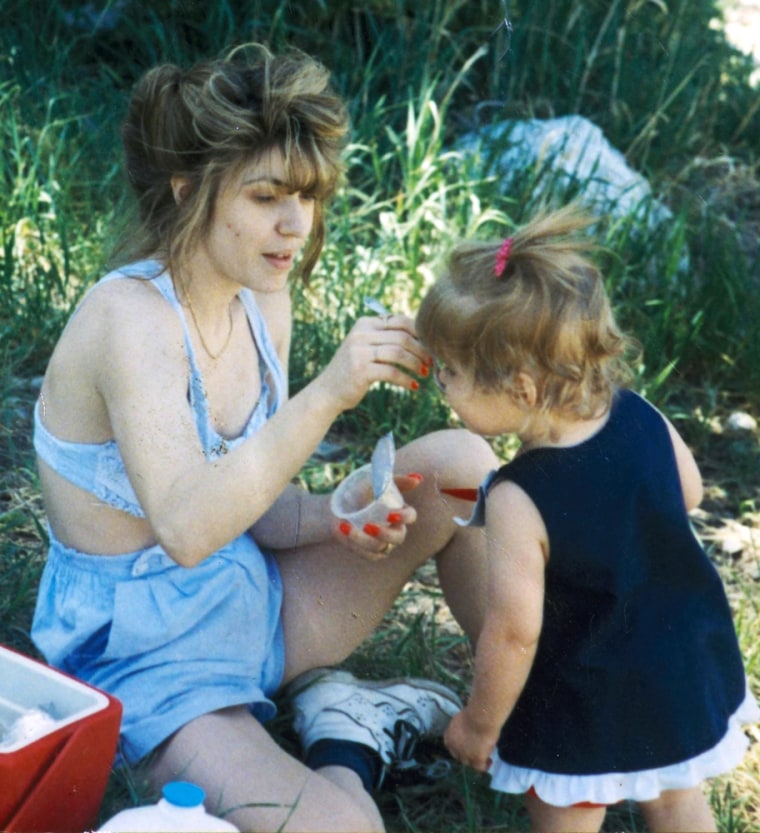
Botzet says she was a good mother who loved her daughter and would never have wanted her to die. She did the best she could for Ariel, she says, and was shocked to learn she would be facing the possibility of the rest of her life behind bars.
We followed the story for two years, and so did the city of Las Vegas. It was a case that grabbed the community’s attention and sparked a debate: at what point should parents be held responsible for the deadly consequences of a chronic illness.
It would be up to 12 Nevadans to answer that question.
"What happened to Ariel?" airs Dateline Sunday, 7 p.m.
• |
Stirring up some uncomfortable feelings while poking around a story (Keith Morrison, Dateline correspondent)
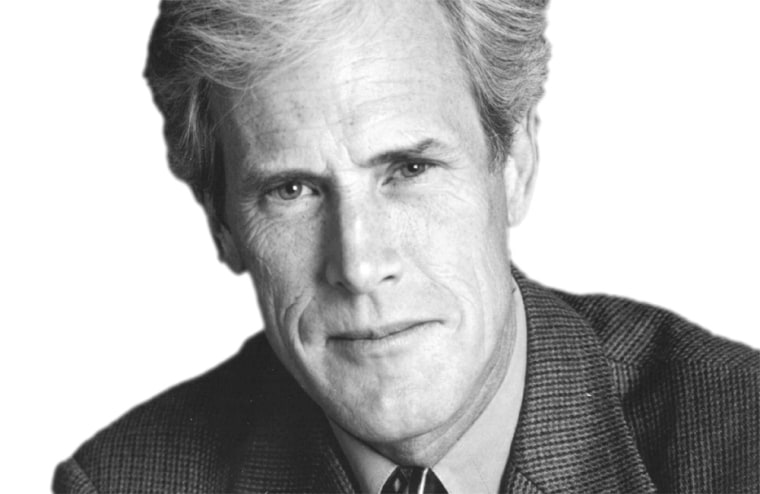
There is a suburb of Portland, one of the very first pioneer settlements on the West coast, a place called Oregon City. It runs up the green hills from paper mills down along the river, past an old downtown full of stores and bars with names you won't see anywhere else, past drop dead pretty renovated cottages a century old or more, up to the less well-endowed rental condos of people for whom life is sometimes a struggle.
Here, in January of 2002, a middle school student named Ashley Pond went missing. A couple of months later, a second girl, Miranda Gaddis also vanished.
Soon, a massive investigation had been mounted, a force of FBI and local police that amounted to 60 or more officers. And one private investigator named Linda O'Neil.

Linda was related, if only vaguely, to Ashley and therefore felt driven to figure out what had happened to her. Our story is her story — her investigation, now told in her book, "Missing: The Oregon City Girls." Linda's conclusion? She was able to pinpoint the culprit long before he was finally arrested... seven months after the girls disappeared.
Now here is the uncomfortable issue for more than a few residents of Oregon City and the Portland area: even in the last few weeks, as we made our way around town, talking about the story of that investigation now several years old, we encountered many people who still wondered, as did newspaper headlines back in August, 2002, "Why did it take the police so long to solve the crime?" Linda's feeling was clearly shared by many others... from lawyers to local reporters to shopkeepers.
But not the FBI, nor the Oregon City police! Not only do they defend their investigation, but they have taken Linda and her book to task, claiming much of it can't be believed.
Perspective, of course, is everything. And the story of those two little girls, the effort to find them, and the second guessing that is now a rather bitter residue... makes for a fascinating and affecting story.
The story on the Oregon city girls airs Dateline Friday, 9 p.m.
• January 24, 2006 |
Did a private eye crack a case before the FBI?
In a multi-part report, "Dateline's" Keith Morrison travels to the suburbs of Portland, Oregon to report on a controversial investigation that still has many wondering why it took so long to capture a serial killer. In an exclusive television interview, the FBI reveals to Morrison never before heard details about the case and offers a stinging rebuke to those who question their investigative techniques. In addition, the 21-year-old woman who believes she was to be the killer's final victim speaks out about her brush with death for the first time on "Dateline NBC," Friday, Jan. 27, 9 p.m.
In the winter of 2002, two young girls vanished from the same apartment complex within weeks of one another in Oregon City, Oregon. Despite an FBI Task Force comprising dozens of agents working feverishly on the case, it appeared to many in the community that important clues pointing to one suspect were ignored. Linda O'Neal, an author, private eye, and grandmother with ties to one of the missing girls, shares with Morrison findings from her own investigation, including incendiary claims that an FBI agent told her: "We really don't need help from private investigators," when O'Neal says she approached the FBI with concrete information about the man who eventually turned out to be the killer.
Viewers will hear both the FBI's response to that charge, and one woman's claims that the attack that nearly killed her might have been prevented, if the task force had put together all the clues that pointed to the serial killer, Ward Weaver.
• January 22, 2006 |
What do you Google? (Josh Mankiewicz, Dateline correspondent)
Apparently, the government wants to know what you’re doing on the Internet. One of the biggest blog topics this week is .
I have two opinions here: The government cracking down on kiddie porn... good idea. The government learning everything you search for on the ‘Net? Bad idea.
Now, I also want to know what you’re doing out there on the Web. So I checked and , and found a lot of traffic headed to a sort of video blog called . It’s a place where you can post your own videos about nearly anything—from to this .
|
• January 21, 2006 |
Supermarket Sweep: Is your grocery store clean? (Lea Thompson, Dateline Chief Consumer Correspondent)

What an assignment: slogging around grocery stores looking for grime, vermin, and other things that could make you sick. Our "Supermarket Sweep" story continues our look at safe food. You may remember our Dirty Dining series on . We also took a hard look at . A natural extension, and an important one — supermarkets.
These stories are an incredible undertaking and we believe this is the largest survey of grocery store cleanliness and safety ever done. Producers Lynn Keller and Liz Brown collected health inspection reports for a thousand stores — 100 stores in each of the top ten grocery chains. Then we pored over about 4,500 inspection reports looking for "critical violations" — those things the federal food code or the local jurisdiction designates as problems serious enough to cause disease. Andy Lehren, our awesome computer guru, then crunched the numbers to come up with a top ten list — a list where no chain wants to be number one.
Liz Brown headed out with a laser digital thermometer and a hidden camera. She, and other Dateline producers, hit 18 stores all over the country.
Frankly, I was surprised the inspection reports showed so many temperature citations: perhaps it is something I didn't think much about before. But, if hot food is not kept hot enough, in the deli for instance, it can form dangerous bacteria after only a few hours. And the same thing goes for cold food — say deli meat or cheese. If it gets too warm, it starts to decay. Yuck.
• |
. Since then, viewers have been asking for an update on how Carrick and her family are doing. Carrick checks in with Inside Dateline, and tells us in her own words, below:
How I'm doing (Carrick Forbes)
I truly could never have anticipated the outpouring of concern and encouragement my family and I received after “Saving Carrick” first aired, July 29, 2005 on Dateline NBC. Since then, the show has aired several times on MSNBC and has been downloaded by people all across the world, from as far away as Australia. It has been used as a teaching tool in universities and clinics, I’m told, and will soon be updated for airing as part of the “Cover to Cover” series on CNBC.
Strangers on the streets on Manhattan have congratulated me, or asked me how I was doing. I have also received hundreds of emails, mostly through , an “interactive memoir” headed up by my father Thom Forbes, engaging people in open and frank dialogue concerning addiction, and involving all who are affected by the disease. Statistically, most of us who have not been consumed by this disease ourselves know of someone close to us who has been.
It took a great deal of thought and meditation, both singularly and as a family, before deciding to go ahead and share our stories on a national platform as widely viewed as Dateline. Although we all had our separate concerns and hopes for the project, ultimately our goal in participating was to encourage open dialogue regarding addiction, to address the pervasive impact that addiction has on the addict, the family the community, and in the bigger picture, the world. For some it may be hard to believe that in the year 2006, the majority of people would rather not address the issue, or flat out deny it is there in their community. The fact is that addiction in all its forms is the number one cause of premature death in America, and as a disease it does not discriminate. And yes, it even hits the “nice, wealthy, well-educated” suburban communities like ours.
• January 16, 2006 |
Thom Forbes, who Dateline viewers were introduced to in the Dateline hour “Saving Carrick” which aired July 2005, is the father Carrick.
Forbes, a freelance writer, was an alcoholic himself, and is now actively helping and speaking out in the recovery community. , as featured on Dateline.
Below, is an excerpt of Thom’s take on the latest controversy surrounding “A Million Little Pieces,” James Frey’s million-copy seller memoir on addiction. Less discussed in the controversy surrounding the book and Frey’s truthfulness about his criminal past is that the memoir is about addiction and recovery.
An excerpt is adapted from his interactive memoir, below. .
Words on addiction (Thom Forbes)
I am an avid reader of addiction memoirs. When “A Million Little Pieces” came out a few years ago, however, I decided to skip it after reading a few reviews that suggested that some of the scenes, starting with an airplane trip where the author seemed like he should be in an emergency room instead of an airline seat, were implausible. When the book got Oprah’s imprimatur, and suddenly everyone else was reading it, and book agents and the like began touting it as a model to be emulated, I broke down and ordered it. It was slower slogging for me than I anticipated. I found the protagonist to be pretty dull, despite some memorable scenes — such as his having root canal without anesthesia — in the first 200 pages. (But I did wonder why he wasn’t allowed to use anesthesia, and so did my dental hygienist. There may be some Novocaine addicts out there, but we’ve yet to meet one.) There were some other details that bothered me later, such as an improbable list of juvenile transgressions that went far beyond anything I’d ever heard anyone do with such persistency and vigor (and I’d done a few myself), and the pummeling of a priest in Paris who too conveniently attempts to seduce a young Frey contemplating suicide.